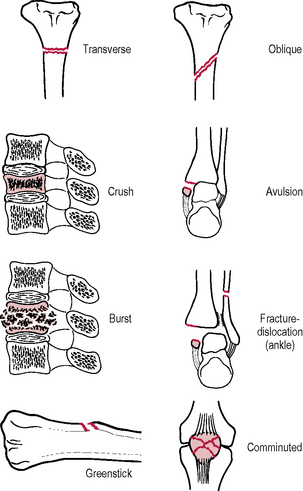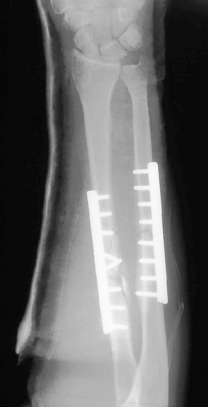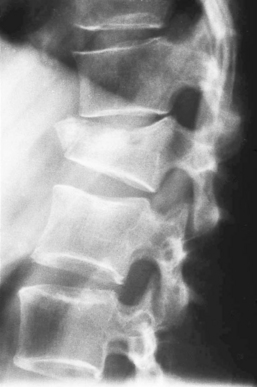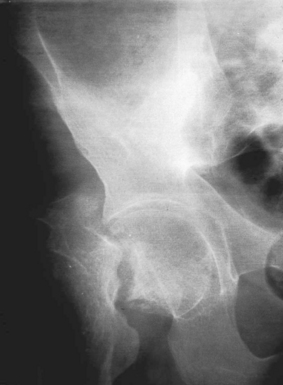CHAPTER 17 Orthopaedics
Fractures
Pattern (→ Fig. 17.1)
Principles of fracture treatment
First aid
Follow Advanced Trauma Life Support (ATLS) principles (→ Ch. 4). Ensure clear airway. Ensure adequate breathing. Stop bleeding. Splintage to prevent further damage by movement of fragments. If open fracture, cover with Betadine-soaked gauze, administer prophylactic antibiotics and check tetanus status.
The fracture itself
Reduction
Methods of stabilizing a fracture
Internal fixation
Indications for internal fixation
Open fractures
Principles of management of open fractures include:
Complications of fractures
Immediate (at time of fracture)
Early (during the period of initial treatment)
Late (after the period of initial treatment)
Avascular necrosis of bone
Part of a bone necroses when its blood supply is interrupted by the fracture. Common sites are:
Spinal trauma
Management of spinal injuries
Scene of the accident
Initial management at the receiving hospital
Fractures and dislocations of the spine
Classification by mechanism of injury
Cervical spine fractures and dislocations
Spinal cord injury
Types of spinal cord injury
Injuries to the lower limb
Hip and thigh
Fractures of the proximal femur
The blood supply to the head of the femur comes from three sources:
The main source is via the retinacular vessels and these may be damaged in fractures of the femoral neck. Fractures may be classified as intracapsular (subcapital, transcervical), or extracapsular (basal, intertrochanteric → Fig. 17.4). Extracapsular fractures do not damage the blood supply to the femoral head and therefore there are no risks of avascular necrosis of the femoral head and non-union. They are most common in the elderly, especially females with osteoporotic bones when the traumatic cause is relatively trivial, e.g. a fall in the house. In the young patient they result from major trauma.









